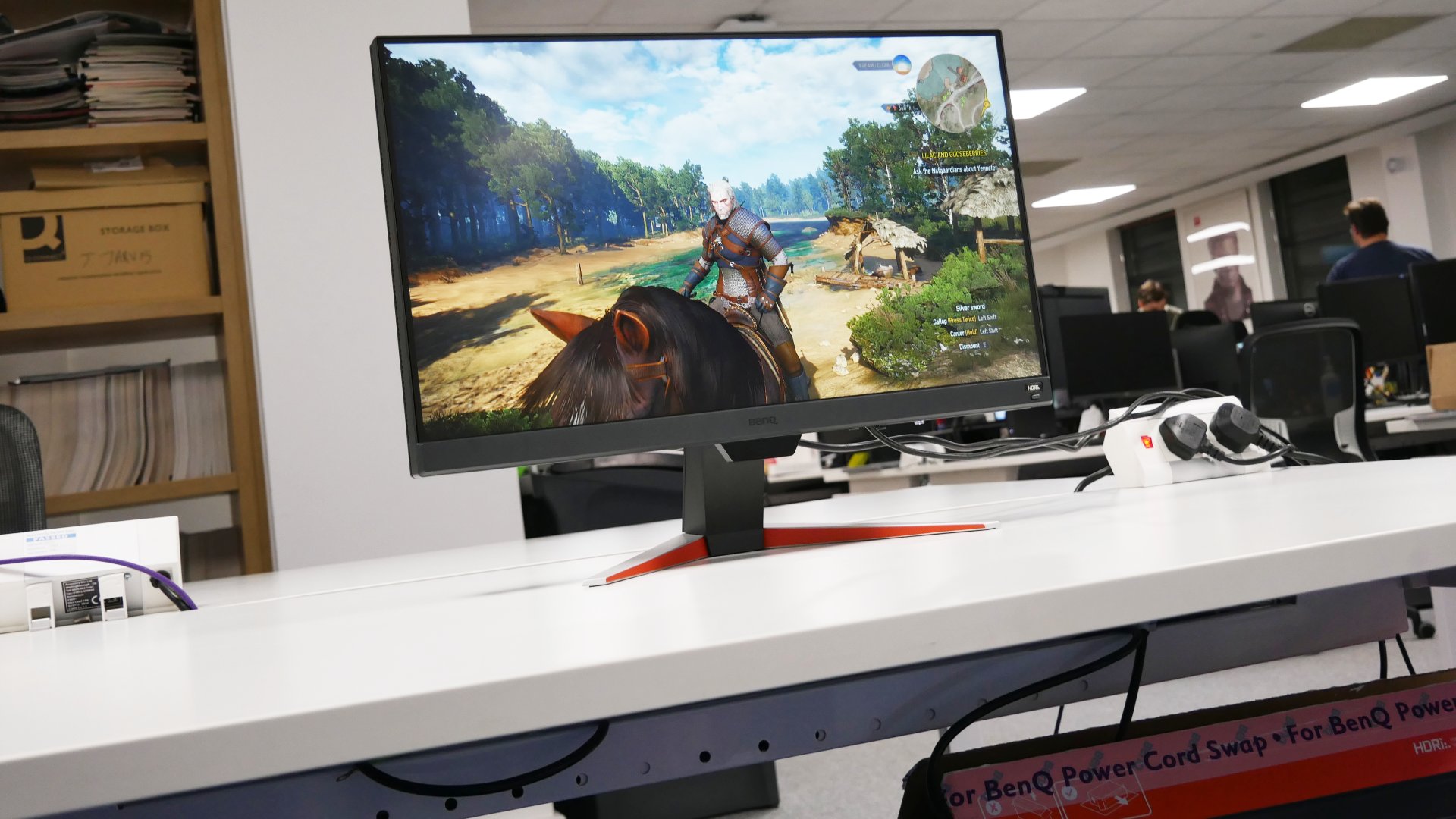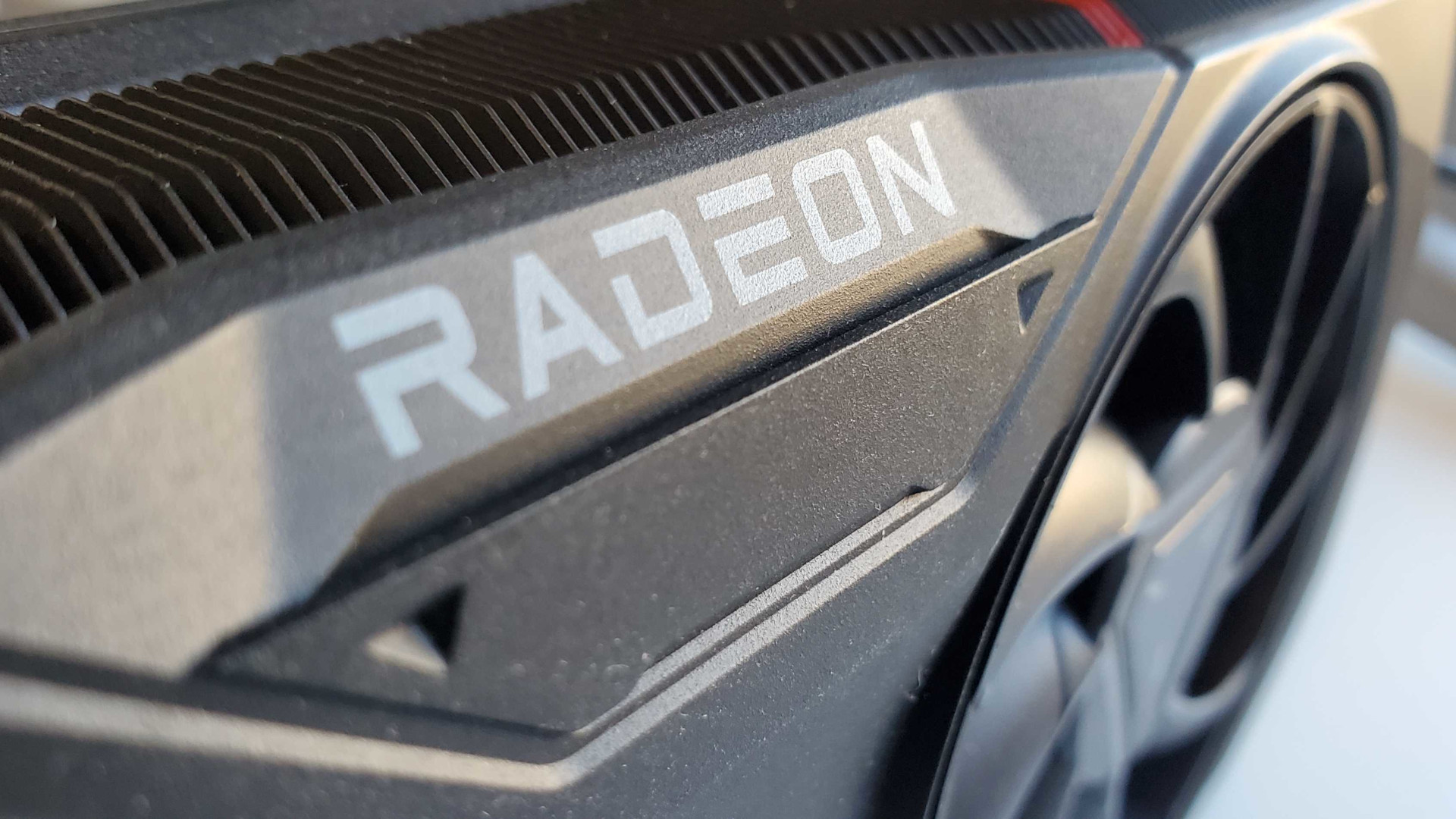
As case studies in false economies go, BenQ's cheaper 1080p gaming panel is a classic.
What difference does a single letter and $50 make? In the case of the BenQ Mobiuz EX240N, quite a bit. At a glance, it looks almost identical to the BenQ Mobiuz EX240 sans “N”, just with a cheaper tilt-only stand.
Given this “N” model goes for $150, some $50 less, that seems like a decent trade for a 25% saving. But don’t be fooled. There’s more than just a cheap stand separating BenQ’s 1080p gaming monitor pairing.
Probably the most significant deviation is BenQ’s choice of panel tech. Where the Mobiuz EX240 gets a premium IPS panel, this Mobiuz EX240N runs VA tech. Of course, VA isn’t exactly the poverty option. That accolade goes to TN. But VA is usually a less costly option than IPS and it’s not always the best choice for gaming. Hold that thought.
Elsewhere, the BenQ Mobiuz EX240N has a similar design aesthetic to its more expensive sibling, just with a few stylistic simplifications to go with that simpler tilt-only stand. But putting the VA-versus-IPS thing to one side for a moment, what exactly are you missing out on as a consequence of that $50 saving?
Not refresh rate, you get the same 165Hz with either option. Ditto video inputs, it’s single DisplayPort 1.2 and dual HDMI 2.0 ports with both monitors. This cheaper model also sports the same basic HDR support in the shape of HDR10 signal processing.
(Image credit: Future)
Screen size: 24-inch
Resolution: 1,920 x 1,080
Brightness: 250 nits
Response time: 1ms MPRT, 4ms GtG
Refresh rate: 165Hz
Viewing angle: 178° H&V
Contrast ratio: 3,000:1 (panel native)
Features: VA panel, adaptive sync, 1x DisplayPort 1.2, 2x HDMI 2.0, HDR10
Price: $150 | £160
What’s more, thanks to the inherent contrast advantage of VA panels over IPS, you could argue that basic HDR10 support is a better fit here and likely to deliver something closer to an actual HDR experience.
On the other hand, BenQ only rates this VA model at 250 nits, which is awfully low by today’s standards and hardly bodes well for HDR sizzle. You also don’t get a USB hub of any kind, where the non-N has a dual-port USB-A hub.
On paper, however, arguably the biggest worry is pixel response. BenQ rates the Mobiuz EX240N at 4ms for grey-to-grey response. That’s some distance off the 1ms of the best IPS panels. Indeed, response is typically VA technology’s greatest weakness.
(Image credit: Future)
The prevailing narrative is that Samsung alone seems to have worked out how to make VA screens genuinely speedy. Unfortunately, the BenQ Mobiuz EX240N does nothing to alter that assessment. This monitor is clearly a step down, in terms of pixel response from its sibling, which itself is quick but not actually the quickest of IPS screens.
BenQ does offer tweakable pixel overdrive, though oddly on this panel it’s only available when running the screen in the distinctly oversaturated “Game” mode. That is more than a little frustrating, though truth be told the fastest setting introduces enough overshoot and inverse ghosting that we’d probably steer clear in any case.
It’s a subjective call how much the slightly heightened motion blur will bother you. There’s just that little bit more textural fuzziness when you whip your mouse around in a game like CS: GO than the faster non-N IPS model. It makes for an ever so slightly dated-feeling gaming experience, and we’re not just talking about those old school Source Engine graphics.
Lots of HDR modes, none you’d actually want to use. (Image credit: Future)
SDR content looks absolutely awful when running in HDR mode. And HDR content barely looks any better than SDR.
In absolute terms, the BenQ Mobiuz EX240N does offer reasonable response. It’s not a mess by any means. But the fact that you have to run it in game mode and suffer the color calibration issues that go with it undercuts even that faint praise.
So for us, if we possibly could, we’d spend the extra $50 for that alone—the faster pixels. Thing is, that isn’t the only reason why spending the extra money makes a lot of sense. Not by a very long shot.
As the 250 nits versus 350 nits ratings for the two BenQ siblings imply, this VA model is a fair bit less bright and punchy. Then there’s the HDR calibration. SDR content looks absolutely awful when running in HDR mode. And HDR content barely looks any better than SDR. At 250 nits, it’s not as if games like Cyberpunk 2077 or Witcher 3 really pop in HDR mode with just that low level luminance to play with.
For the price point, the connectivity is decent. (Image credit: Future)
What’s more, on the Windows desktop there’s very visible softness to font rendering. It looks like some kind of image processing at play, but digging through the OSD menu and toggling every option that could possibly be to blame—plus resetting the screen to factory defaults—didn’t fix it. It’s the sort of problem you’d see on really cheap monitors years ago and we thought had been largely consigned to history.
All of which means this cheaper BenQ 1080p panel makes for a very different overall proposition. We had thought it might offer most of the visual experience minus a few features and frills, like a USB hub and additional stand ergonomics. Alone, neither would be deal breakers depending on your needs. After all, a 165Hz gaming monitor for $150 from a good brand like BenQ seems like one heck of a deal.
(Image credit: Future)
(Image credit: Future)
(Image credit: Future)
(Image credit: Future)
As it is, along with the overt omissions from the spec list, the image quality takes a bit of a knock, too. It’s noticeably slower in terms of pixel response, obviously dimmer, delivers an even more pointless HDR experience, and has some funny image processing going on that makes fonts look a bit fuzzy. Oh, and it has the same silly, confusing, over-featured OSD menu stuffed with pointless image modes you’ll never use.
So, yeah, that inconspicuous “N” turns out to be pretty important after all. And the $50 it ostensibly saves absolutely isn’t worth it.






